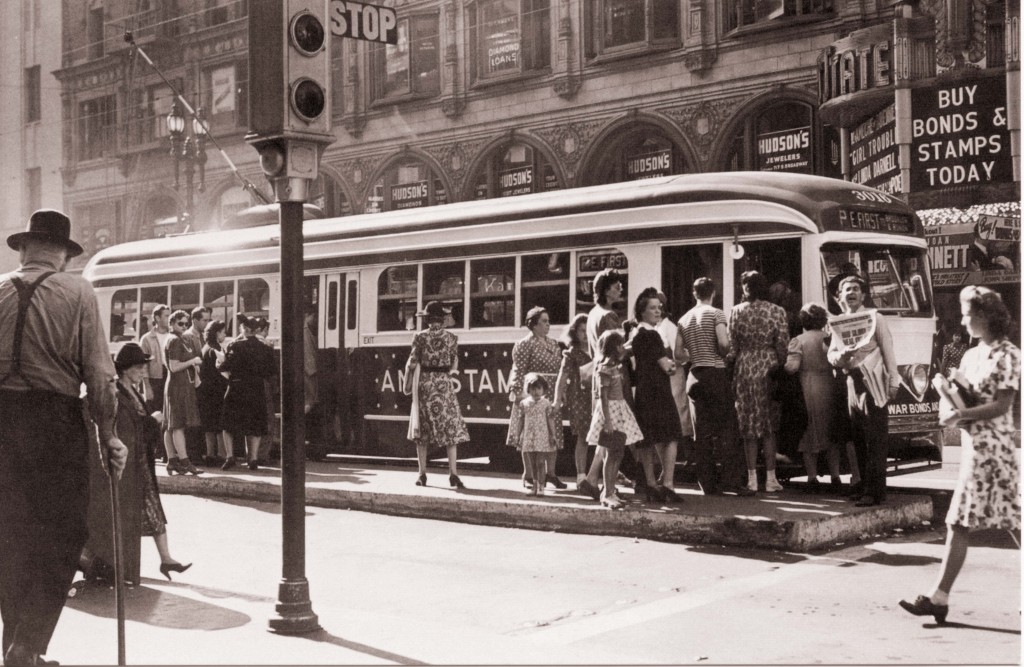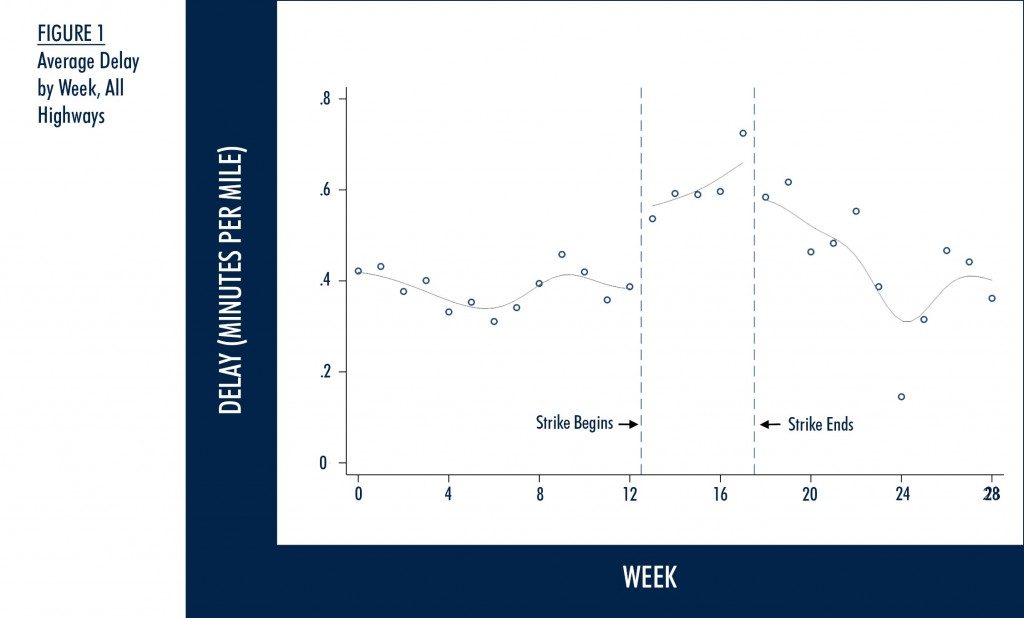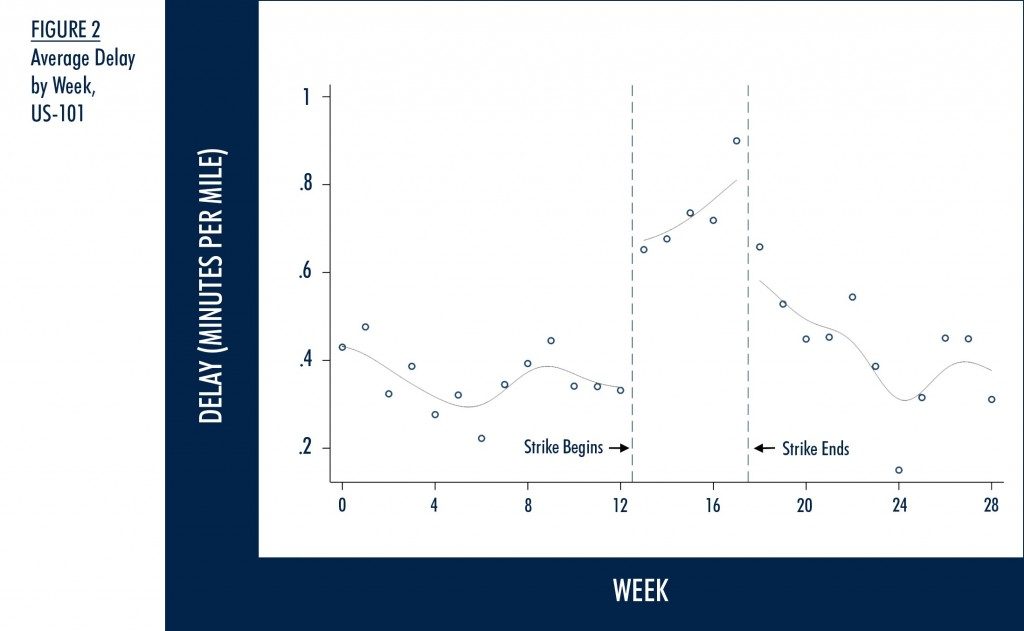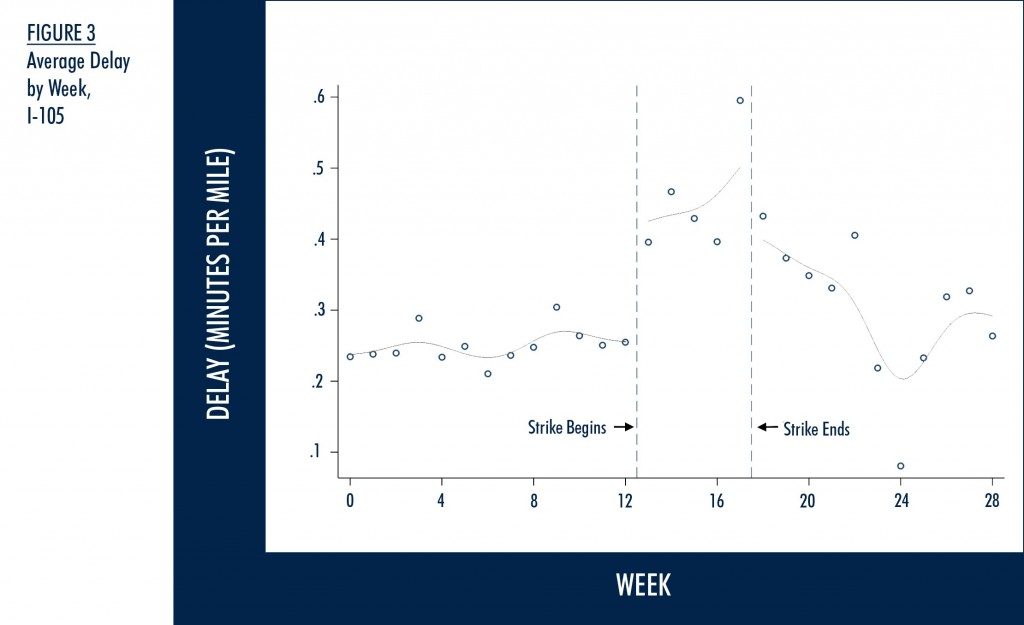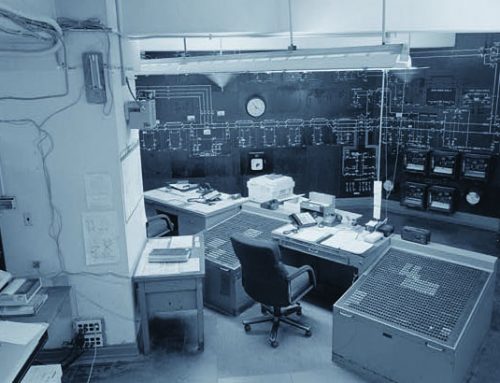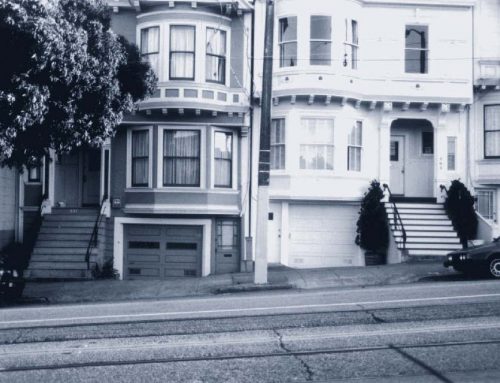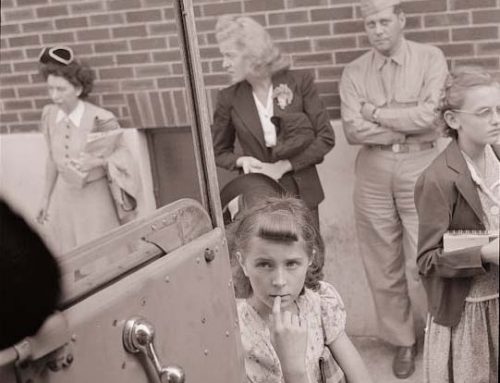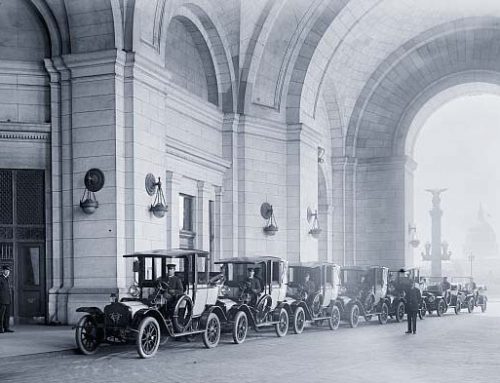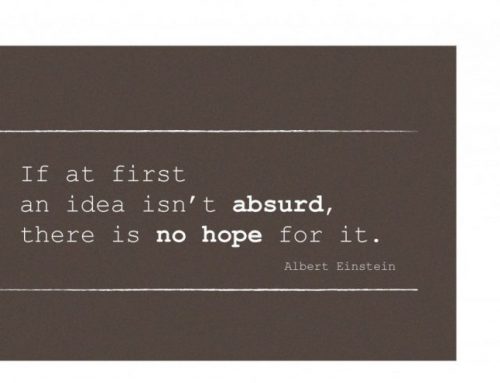Public transit receives a large share of transportation funds but accounts for only 1 percent of passenger miles traveled nationwide. Nevertheless, public transit subsidies remain popular in many areas. For example, in 2008, 67 percent of Los Angeles County voters approved a half-cent sales tax to raise $26 billion for transit over 30 years.
Why does the public support transit subsidies if so few voters are frequent riders? The simplest explanation is the promise of congestion relief: commuters expect to benefit from reduced congestion even if they rarely use public transit themselves. A large body of transportation and economic research, however, concludes that public transit has little effect on reducing congestion.
An important detail that has received little attention is that commuters on different roadways in the same metropolitan area face sharply differing levels of congestion depending upon the time and location traveled. Therefore, determining which drivers are willing to ride public transit is essential in determining transit’s impact on congestion. Travel-time costs dominate most commuters’ choice between transit and driving.
Intuition suggests — and studies confirm — that transit is most attractive to commuters who face the worst congestion. Thus a high number of transit riders are commuters who would otherwise have driven on the most congested roads at the most congested times. Reducing the number of commuters driving on heavily trafficked roads can greatly reduce congestion even if these drivers represent only a modest fraction of total commuters.
Reducing the number of commuters driving on heavily trafficked roads can greatly reduce congestion even if these drivers represent only a modest fraction of total commuters.
The Effects of a Transit Shutdown
To determine whether public transit can greatly reduce traffic congestion, I collected data on freeway speeds during a strike by Los Angeles County Metropolitan Transportation Authority (Metro) workers. The strike caused an abrupt shutdown of the LA transit system, halting both buses and rail service. I then tested the prediction that transit greatly reduces congestion.
The first step in this research was to quantify the effects of the shutdown, and then to calculate the congestion relief benefits that the LA transit system yields. The estimated benefit of congestion relief is between $1.20 and $4.10 per peak-hour transit passenger-mile, or over $1 billion per year.
Metro provides heavy rail (subway), light rail, and bus service for approximately 10 million people in a service area of approximately 1,400 square miles. In October 2003, Metro workers began a strike that shut down bus and rail service for 35 days. I gathered hourly speed data from before, during, and after the strike from 640 vehicle detectors across major Los Angeles freeways. I then used a regression model that controls for additional factors that might affect congestion over the sample period. This isolated the traffic congestion associated with the strike itself.
Figure 1 plots the average delay by week across all major freeways for a 28-week period before, during, and after the strike. Delay is measured in minutes per mile relative to a free-flow speed of 60 mph; one minute of delay, for example, corresponds to a speed of 30 mph since it takes two minutes, instead of one, to traverse one mile. Delay is measured during peak periods (weekdays from 7 am to 10 am, and 2 pm to 8 pm) when most congestion occurs. The two vertical dashed lines in the figure indicate the beginning and the end of the strike.
In the 12 weeks leading up to the strike, travel delay averaged around 0.4 minutes per mile. When the strike began, average delay jumped to 0.6 minutes per mile, an increase of 46 percent. Travel delay continued to increase as the strike persisted, suggesting that the impacts were not confined to the initial week of the strike. Delays fell following the strike, but took several weeks to return to pre-strike levels.
Several reasons explain the gradual ebb in delay. First, service was slowly phased back in over the first week following the strike. Second, the week of Thanksgiving—which occurred two weeks after the strike ended—tends to have higher-than-average delays. Finally, commuters may have taken some time to return to their original travel patterns following the strike.
I expected the largest increases in congestion to occur on freeways that parallel busy transit lines, since commuters will likely move to the closest highway in the event of a transit shutdown. Figure 2 plots the average delay on US-101, which parallels the Metro Red Line subway (the line with the highest ridership in Metro’s system). Figure 3 plots the average delay on Interstate 105, which parallels the Green Line light rail (the fourth-busiest Metro line). In both cases, an impressive and sustained increase in average delay occurred after the strike began.
Could the sharp increases in congestion observed at the strike’s start be due to other unobserved factors? This seems very unlikely. One possibility is that, in order to maximize the strike’s perceived impact, the transit workers’ union timed it to begin on days when they knew traffic would be bad. However, the strike’s timing was determined not by the union, but by the judiciary: it occurred on the first business day following the expiration of a 60-day court-ordered injunction on striking.
It is possible that important events affecting traffic congestion might correlate with the strike’s beginning simply by chance. For example, the strike began following a three-day holiday (Columbus Day weekend). To rule out bias in the results, I conducted two tests. First, I estimated the strike’s effect on traffic in neighboring Orange and Ventura Counties. Portions of these counties lie within LA Metro’s jurisdiction, but neither is served by Metro; thus both should be unaffected by the strike. The second test examined delays on LA freeways one year after the strike. If seasonal effects drive the results, then similar results should appear a year later. In both tests I found no effects on traffic congestion, which strongly suggests that the strike, not chance, caused the increased delays.
Transit’s Congestion Relief Benefits
How large are the congestion-relief benefits of public transit during peak hours? I calculated the potential benefits under two scenarios. The first scenario focuses on the reduction in freeway delays. In Los Angeles, people drive 36 billion miles on the freeways each year during peak hours. An increase of 0.19 minutes of delay per mile traveled—the average increase in delay observed during the 2003 Metro strike—translates to an increase of 114 million hours of delay per year. If time is valued at half the average hourly wage, or $10.30 for Los Angeles County, transit yields an annual congestion-relief benefit of $1.2 billion per year. Previous research has found, however, that motorists place a higher cost on time spent stuck in traffic than on time spent driving on uncongested roads. If driving in congestion adds 80 percent to the time cost of travel, a factor in line with previous studies, the congestion-relief benefit becomes $2.1 billion per year.
In the second scenario, I assumed that eliminating transit service increased delays on arterial roads by the same amount that it increases delays on freeways. There are strong reasons to believe that congestion on arterial roads increased as much as, or more than, congestion on freeways. In particular, ramp meters restrict vehicle flows onto Los Angeles freeways and thus act as a barrier to additional congestion, but they are not used on arterial roads. If we assume that arterial road delays increased by the same amount as freeway delays, the congestion-relief benefit of transit is then $2.3 billion per year for both freeways and arterial roads during peak hours. This amount comes from valuing time at half the hourly wage. When factoring in the higher time cost of driving in congested traffic, the congestion-relief benefit is $4.1 billion.
Metro carried approximately one billion passenger-miles during peak hours in 2003. The congestion-relief benefit per transit-passenger mile is between $1.20 and $4.10 during peak hours, depending on assumptions about the value of time and the level of congestion on arterial roads. I also estimate that average consumer surplus — the value to the rider who chooses to take transit instead of driving — is about $0.24 per mile for rail passengers and $0.11 per mile for bus passengers. Comparing the $1.20–$4.10 benefit per passenger mile for congestion relief to the $0.11–$0.24 consumer surplus per mile for transit riders suggests that freeway congestion-relief benefits are much larger than the private benefits gained by transit riders.
Long-Run Effects
A key issue in calculating transit’s benefits is that, when faced with an extended shutdown, individuals may adapt to increased traffic congestion by using strategies that are not feasible in the short term. Indeed, the “fundamental law of road congestion” implies that in the long run, individuals respond to increases in congestion by reducing travel, ultimately leaving congestion unchanged. The congestion caused by a long-term public-transit shutdown is likely different from the short-term effects of a temporary shutdown. Potential long-term travel adaptations that may not be available in the short run include telecommuting, ride sharing, changes in work schedules, moving closer to work or school, and moving out of the metropolitan area. The first three represent reductions in travel demand, while the last two represent a relocation of travel demand.
If the transit system were to shut down permanently, would enough commuters change their behavior to reduce congestion to pre-shutdown levels? A simple travel supply-demand model suggests that the response of travel demand to congestion would need to be implausibly large to return congestion to near pre-shutdown levels. Estimates from natural experiments, such as London’s congestion charge and sharp increases in gasoline prices, suggest that travelers do respond to increased costs by reducing travel. Their responses, however, would not be nearly enough to bring congestion back to its pre-shutdown level. Ultimately, the congestion-relief benefits of transit in the LA metro area are $1 billion per year or more. Contrary to conventional wisdom, the total benefits of building and operating the Metro rail system around 2003 likely exceeded the costs.
Limitations
Though this analysis presents strong evidence that transit systems play an important role in reducing peak-hour congestion, several limitations are worth noting. First, it is difficult to fully anticipate what types of long-term changes in travel behavior might occur if the transit system were shut down permanently. Fundamentally, rail lines and busways transport passengers at high capacity. During their peak hours, the Metro Red and Blue lines carry as many passengers as congested 12- and eight-lane freeways respectively, at substantially lower capital costs. In the long run, this high capacity affects urban densities, employment locations, and even work hours. Valuing the economic gains of coordination in space or time is beyond the scope of this study.
A second limitation to this study is that, because the entire transit system shut down, the results do not reveal the effects of marginal changes in the transit network, such as a subway line extension. Likewise, they cannot reveal the optimal mix of service (e.g., whether a particular route should be served by light rail or bus rapid transit).
A final caveat is that the “optimal” solution of congestion pricing is assumed to be politically infeasible. With optimal congestion pricing, there would be no congestion and thus no congestion-relief externality, and the benefits of transit service could be evaluated on more conventional grounds.
Does Transit Make Economic Sense?
I would argue that in many cases, yes. The median urban voter clearly believes that transit delivers significant benefits, as evidenced by the continued funding of most transit systems. Nevertheless, it has proven surprisingly difficult to establish transit’s benefits using conventional transportation models. In this study I reconcile this paradox by noting that many commuters who choose to ride transit are not distributed at random, but instead come from the most congested roads at the most congested times. Removing them from the road thus generates a large reduction in congestion. Detailed freeway speed data during a five-week shutdown of the LA transit system confirms this prediction.
At a minimum, these results establish the importance of transit in Los Angeles, which many consider the quintessential car-centric city. They also suggest that public transit greatly reduces congestion in other large cities. The per-capita transit ridership and congestion levels in Los Angeles are roughly equivalent to those in other large urban areas, such as Chicago, San Francisco, Houston, and Washington, DC. Nationwide, public transit surely provides many billions of dollars worth of congestion relief.
The article is adapted from “Subways, Strikes, and Slowdowns: The Impacts of Public Transit on Traffic Congestion,” American Economic Review (2014)104: 2763-2796.
Further Reading
Yihsu Chen and Alexander Whalley. 2012. “Green Infrastructure: The Effects of Urban Rail Transit on Air Quality,” American Economic Journal: Economic Policy 3(4): 58–97.
Pierre-Philippe Combes, Gilles Duranton, Laurent Gobillon, and Sébastien. 2010. “Estimating Agglomeration Economies with History, Geology, and Worker Effects,” Agglomeration Economics, Edited by Glaeser, Edward. University of Chicago Press, 15–65.
Gilles Duranton and Matthew A. Turner. 2011. “The Fundamental Law of Road Congestion: Evidence from US Cities,” American Economic Review 101(6): 2616–52.
Ian W.H. Parry and Kenneth A. Small. 2009. “Should Urban Transit Subsidies Be Reduced?” The American Economic Review 99(3): 700–724.
David Schrank, Tim Lomax, and Bill Eisele. 2012. 2012 Urban Mobility Report, Texas Transportation Institute. http://mobility.tamu.edu.
Clifford Winston and Vikram Maheshri. 2007. “On the Social Desirability of Urban Rail Transit Systems,” Journal of Urban Economics 62(2): 362–82.

